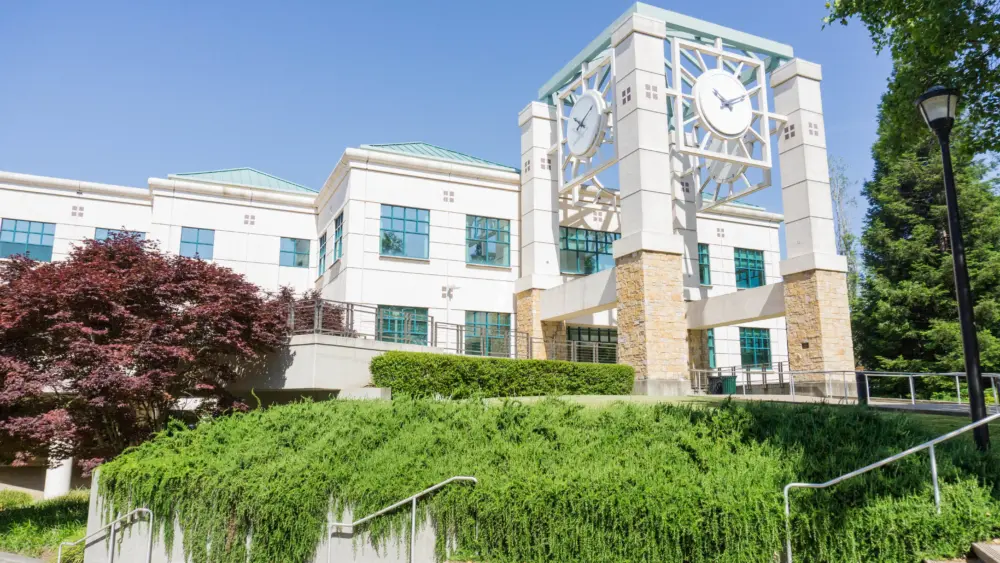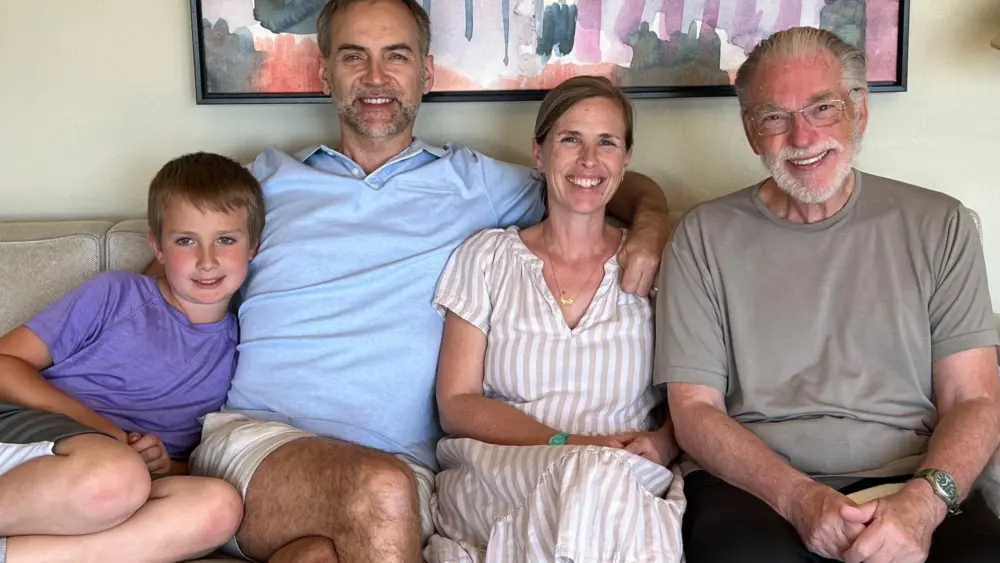Kaiser Permanente’s new North Tower expansion in Santa Rosa doubles its ability to provide quality health care with a host of new features, including technologically advanced medical equipment and new imaging suites.
“This project has been on the drawing board for many years. HMH’s preconstruction efforts and the associated planning started in 2003, and the project’s actual construction activities began to ramp up in September 2007,” says Kevin Brooks, a senior project manager for the expansion. “This expansion adds tremendously to Kaiser’s ability to provide quality services to the region. The six-story tower—one level below ground, five above—adds 146,000 square feet overall. That includes some administrative offices, an expanded and upgraded sterile processing department, and an MRI (1.5T) and nuclear medicine imaging suite on the below-ground level.
The need for the expansion, says Brooks, was simple: “The demand existed for more and better health care, and it was time for the upgrade, both in terms of modernizing and in terms of expanding Kaiser’s capacity to deliver that improved quality of care.”
Brooks’ primary employer is HMH Builders (Harbison-Mahoney-Higgins), a company that’s been based in Sacramento since its inception in 1957. Prior to his involvement at Kaiser Santa Rosa, Brooks’ projects included the 15-story Gap headquarters in San Francisco (featuring a seven-story atrium, complete with skylight), the 270-unit Essex on Lake Merritt (Oakland’s acclaimed market-rate housing project) and UC San Francisco’s Mission Bay QB3 five-story research laboratory building, among others.
Brooks, who lives in Napa with his wife and 7-year-old daughter, is a native of Algonquin, Illinois. He earned his degree in civil engineering at the University of Illinois, Urbana- Champaign, then came west in 1991 to undertake a Master’s at UC Berkeley. “I knew I liked building things—you know, Legos, Lincoln Logs and the like—and the math and science intrigued me. I like the outdoors, so doing things ‘green’ is of importance to me.”
The green tower
“Green” is a big word with the new tower, inasmuch as Brooks is a founding member of HMH’s executive green board (responsible for developing and executing the company’s green procedures). “Something as simple as recycled blue jeans,” he says with a laugh, “is much better than fiberglass. The cotton insulation we used has 85 percent post-industrial recycled natural fibers and no chemical irritants. It’s heavier than fiberglass and provides better insulation and sound deadening. We also used what are called ‘agrifiber’ doors. The door cores are constructed of rapidly renewable resources: wheat, soybean and other straw-like substances. These let us omit urea formaldehyde!”
Formaldehyde-free casework is also an important part of the new North Tower. “Most particle board currently used in cabinetry uses materials that contain urea-formaldehyde adhesives,” notes Brooks. “Often, you’ll see the interior lining of these cabinets done with a plastic made from melamine and [again] urea-formaldehyde resins. Both yield, in gas form, pollutants that are particularly nasty in confined areas, indoors. We did all of our casework with what’s called MDF, medium density fiberboard, and the product we used contained neither. We also specified plastic laminate linings instead of melamine.
HMH also instituted a construction waste diversion plan that let the builders divert an immense amount of waste materials from going into landfills. “We recycled 1,050 tons of construction waste—wood, concrete, sheetrock and other debris—out of the total of 1,155 tons of construction waste the project generated. That’s a diversion rate of about 90 percent, which is remarkable. The industry average, by comparison, is slightly above 80 percent. And, as a point of fact, that diverted waste accounts for a savings in avoided landfill charges of more than $62,000 to date.
“We also looked into using finish materials with recycled content. Some of the ceramic tile we’ve installed contains up to three-quarters recycled glass. In areas where resilient flooring is required [where nurses work repetitively], we went to rubber flooring rather than vinyl composition tile [VCT] or sheet vinyl. We also used vinyl-free ‘Acrovyn’ for wall rails and corner guards.”
The team also decided against using PVC (poly vinyl chloride) roofing, employing instead a single-ply roofing material called thermoplastic polyolefin (TPO), which has no known adverse health effects under normal use. So, no tennis on the roof, please.
“We were able to find an acoustical ceiling tile that contains up to 83 percent recycled and naturally occurring materials,” continues Brooks, clearly on a roll. “We also found an interior paint that contains less than 1 percent volatile organic compounds by weight, which greatly reduces indoor air pollution. Dual-flush toilets help conserve water; low-mercury, extra-long-life fluorescent light bulbs cut energy costs and reduce mercury emissions; and we recycled the old road and parking lot asphalt by grinding it up and reusing it as a roadway base onsite for our new pavements.”
That all adds up to a plethora of convincing indications of a strongly entrenched commitment to the green wave.
Making it work
Linda Challoner is strategy leader for Kaiser Permanente. She says her experience as a registered nurse for more than 20 years gives her a practical advantage in her new (the last four years) position. “The best design in the world is worthless if it doesn’t work for the patient,” she says coolly. “If patient flow is disrupted or impeded, it’s not going to be practical.”
That said, the Wisconsin native is decidedly upbeat about the new North Tower. “The new tower has all sorts of wonderful things that will directly and beneficially affect the community. We’ve added lots of beds and Emergency Room capacity. We’ve added 58 licensed beds and our Emergency Room capacity—from 17 to 34 beds— is double what it was before. The Intensive Care Unit is also doubled, from 10 to 20 beds. All of our private suites are quite lovely, with pull-out couches for the convenience of visiting family members. Having family close by is vital to the healing process. The ceiling tiles are almost entirely produced from recycled materials and they make the rooms very, very quiet. Quiet, as you can imagine, is also a valuable healing asset.”
Challoner points particularly to the wall insulation. “It’s cotton insulation where we can, which is mostly shredded blue jeans, which is denser than fiberglass; it also provides better insulation. That, too, makes our rooms quieter. Here’s another thing you might not consider within the ‘healing’ mode, but the corridors are painted with bright, vibrant colors. That diversity of color livens things up and, yes, promotes healing. All-white walls do nothing for your senses. The corridors now have a little ‘pop’ of color, and most of the artwork in the corridors are from local artists.
“We’ve also been working with ArtStart, a nonprofit that hooks up aspiring young artists with established local artists to execute community-enhancing artistic works. They’ve done the bench outside the Emergency Room that has a marvelous Spring Lake scene. It’s colorful and lively. They’re doing murals in some of the patient rooms; other rooms have walls of a wood-like material that’s also soothing and healing.”
After earning her R.N. in Rochester, Minnesota, Challoner worked as an operating room nurse and built an outpatient surgery center before running outpatient clinics for Kaiser for a number of years. “One entirely new service we’ve added with the tower is our Interventional Radiology Suite. We used to have to send patients to San Rafael or San Francisco for this sub-specialty, wherein minimally invasive procedures—like having a stent inserted—can be performed using image guidance. It’s intricate work, but the patient avoids general anesthesia, and the recovery period is remarkably reduced.”
Sharing credit
Bill McNearney, the project architect, is quick to deflect credit to others at Santa Rosa’s TLCD Architecture. “I’ve been here more than five years, but this project was in our office for three years before that. TLCD has worked very hard on the project for more than seven years, and we’re happy with the results.”
McNearney is also candid about the problems the company faced designing the North Tower. “Kaiser Permanente is a major player in the health care field, and its philosophy—which you have to admire—is to deliver the most health care possible for the least amount of money. Given that focus on functionality, it was our challenge to design a cost-effective and efficient hospital that looks good.”
It was a riddle of sorts, doing the most with the least: “To be successful as the architect for a large hospital project, you need a lot of collaboration and teamwork,” agrees McNearney. “I was fortunate to work with a great group of designers, engineers and contractors, who all worked closely together as a problem-solving team. We all worked together to create this very successful project.”
The big thing, according to McNearney, was learning to be humble, to put egos aside and work together. “There’s no success without listening to people. If we design something that can’t easily be built, we’re nowhere.”
When the Office of Statewide Health Planning and Development granted permission for occupancy, Kevin Moore, the OSHPD fire and life safety officer, was quoted as stating, “I’ve seen good projects and I’ve seen bad projects. This has been a great project from start to finish.”
Words of wisdom
Kaiser Permanente—a company that prides itself on its integrated model of care—has had a presence in Santa Rosa since 1980, and the hospital has been here since 1990. Going back to the founding of the company, one feels compelled to recall Henry J. Kaiser’s original motto (“Find a need and fill it”), which was a rousing call to arms in its time (World War II). The nation needed to gear up production, and it needed to be done instantly and with gusto.
The current Kaiser Permanente mantra is “Thrive.” In today’s world, that succinctly points to a need and, yes, aims to fill it. The new North Tower offers example fair to both of those encouraging sets of guidelines. Bravo!



